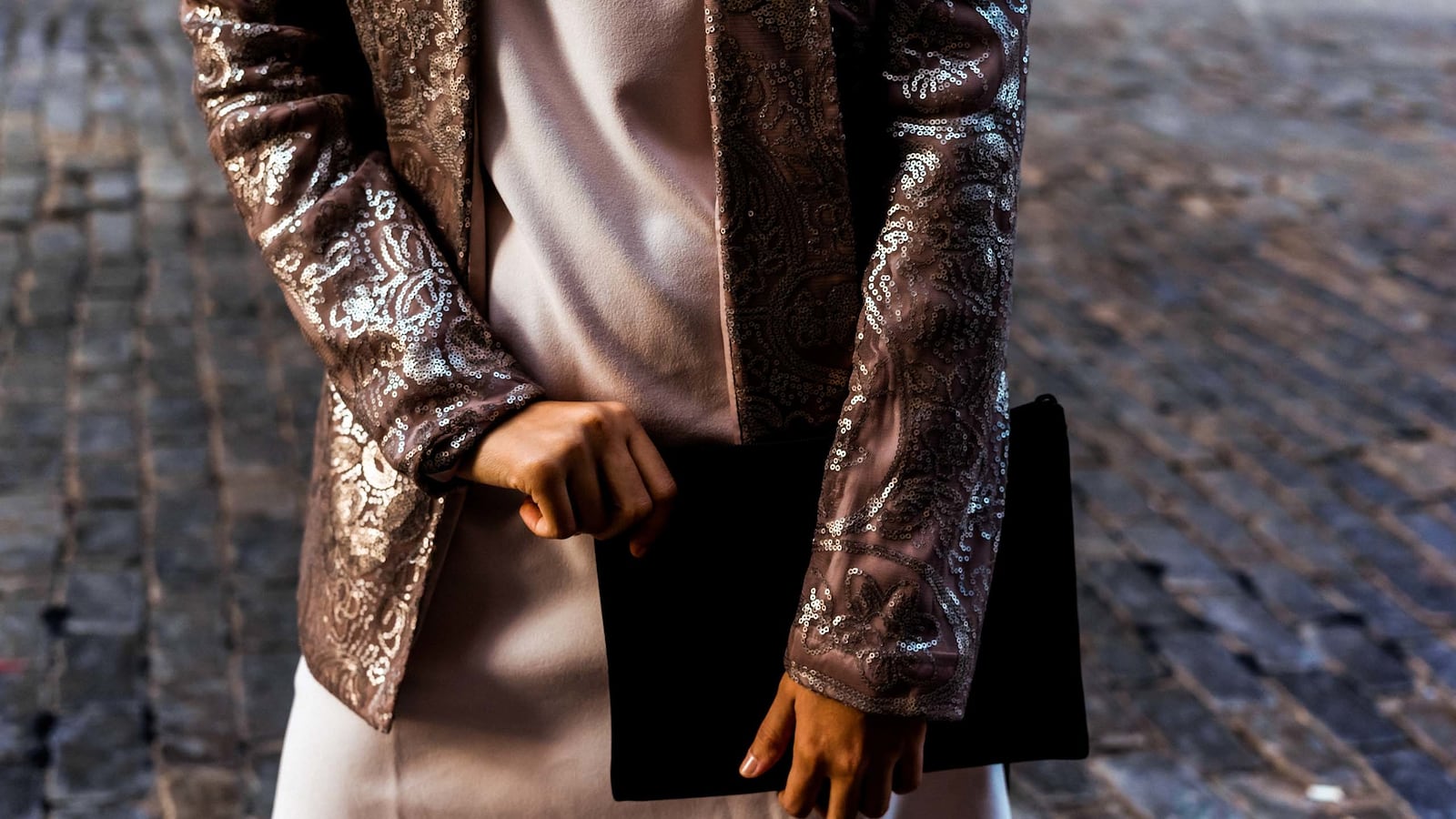
When you live in New York, or other cosmopolitan cities, the world of high fashion can seem like it surrounds you, approachable in its ubiquity but barely out of reach when you consider your bank account balance. Who are the fashion mavens in these clothes, the professional women clamoring for perfectly austere hand-stitched leather accessories or silk-embroidery on wispy panels of fabric? How do they allocate funds for the next fashionable conquest without putting their financial well-being in jeopardy? Are they all super-rich?
Not necessarily. Sure, you might not be able to buy every Gucci jacket you’d like to sport on your commute, but if you approach your finances practically, it’s possible to have a working relationship with the fashion zeitgeist. For some first-hand advice on how to achieve one’s fashion dreams while staying financially responsible, we spoke to two women managing to do just that. Julia Zhou, Digital and Social Media Producer at Big Spaceship, and Holland Haiis, an international speaker and team builder on the art of communication, shared their thoughts.
Both women have found a defined groove in which their fashion senses thrive. You could even say their styles have become extensions of who they are and what they do, both professionally and personally.

One thing both of our interviewees had in common: they set fashion goals for themselves, deciding on a style and – as importantly – what they want that style to project. As a millennial working at a creative agency, Julia Zhou wants her fashion choices to represent her aesthetic as an inspired colleague and partner. She describes her personal style as minimalist, architectural, and oversized – very on-trend for the current moment’s love of tonal layering and the move away from skinny jeans to drapier garments. Like most of us, she has a handful of beloved designers whose pieces she views as aspirational, naming Comme des Garçons, Ann Demeulemeester, and Rejina Pyo as particular favorites.
And here’s the trick. Rather than blowing her money on an impulse buy or a risky seasonal item, Zhou plans to invest in a few staple-to-statement pieces from some of these lines, looking for items that deliver lasting versatility. She mentions a bomber jacket, for instance, a piece classic enough that it’s a solid investment, while also very much of-the-moment. That way, she can live her designer dreams without sacrificing too much disposable income.
Similarly, Holland Haiis chooses her styles with purpose. As an executive-level speaker who works with different groups and businesses, Holland dresses for her audience. This allows her to be more effective in gaining audience attention and creates a confident delivery for her thought leadership platform. In other words, dressing the part really does help many of us gain the authority we crave in professional settings. Haiis – who describes her personal style as classic and timeless, with an edgy spin on feminine styles (think a moto jacket paired with a dress) – also stresses the importance of looking at fashion purchases as investments. As she puts it, “A timeless piece, like a Chanel jacket, can be a wardrobe’s best friend.” Like Zhou’s coveted bomber jacket, such a Chanel piece would be unlikely to go out of style anytime soon, and could be used in a variety of looks, making up for its up-front costs. And for Haiis, her favorite designers – Chanel, Carolina Herrera, and Calvin Klein – all create classic pieces worthy of an investment.

To sum up her fashion perspective, Zhou advises shoppers to choose pieces that justify the financial outlay. If your outfit lends credibility to your image, she says, it’s not just clothing that you wear to work; it’s fashion that works for you. Frequent clothing purchases should cost less, whereas investment accessories should last a long time. Haiis has an even more specific idea: when she was younger and had less disposable income, she would plan her spring/summer clothing budget at the beginning of the year. By April, she had enough to buy a few key pieces. She advises women who are at the beginning of their careers to work within the framework of a purchasing plan; otherwise it’s “just too easy to be seduced by a gorgeous item that doesn’t work with your wardrobe.”
So, how do we non-millionaires join the fashion elite? The answer, according to Zhou and Haiis, is piece-by-piece. Determine how much you can realistically spend on wardrobe additions, considering your income and other pertinent factors in your budget. Take inventory of your closet and create a shopping list based on what’s missing, in order to better focus your shopping on investment items. Once you’re ready to shop, try to seek out the secondary lines of high-end designers, for more affordable, quality items that bring a similar aesthetic as the same designers’ runway lines. Above all, remember that “it’s on sale” or “it’s on-trend” aren’t reasons enough to buy – if you don’t like it, don’t bother. The value of fashion increases exponentially when it supports the image you want to project. Know that image, and you’ll be ready to go.






